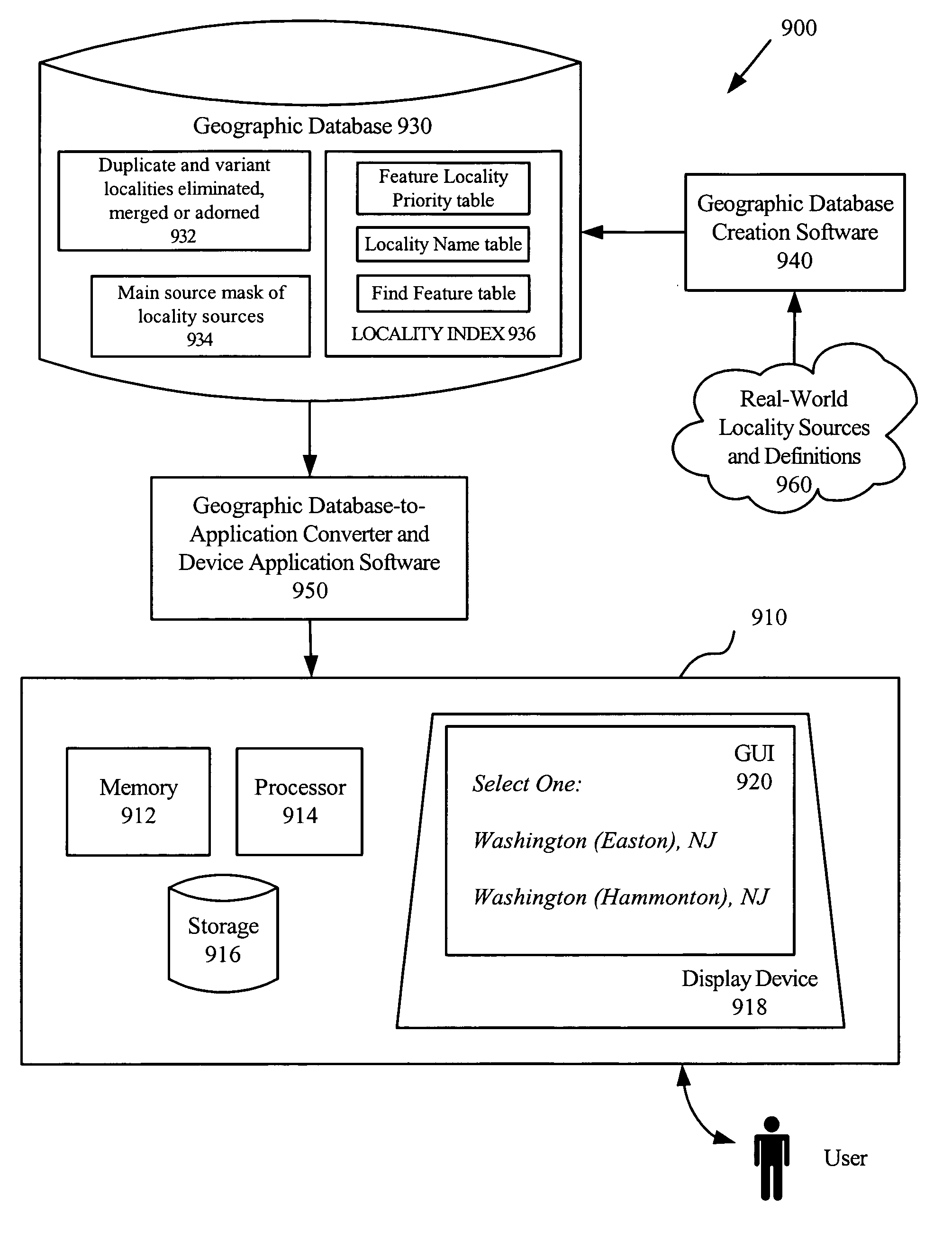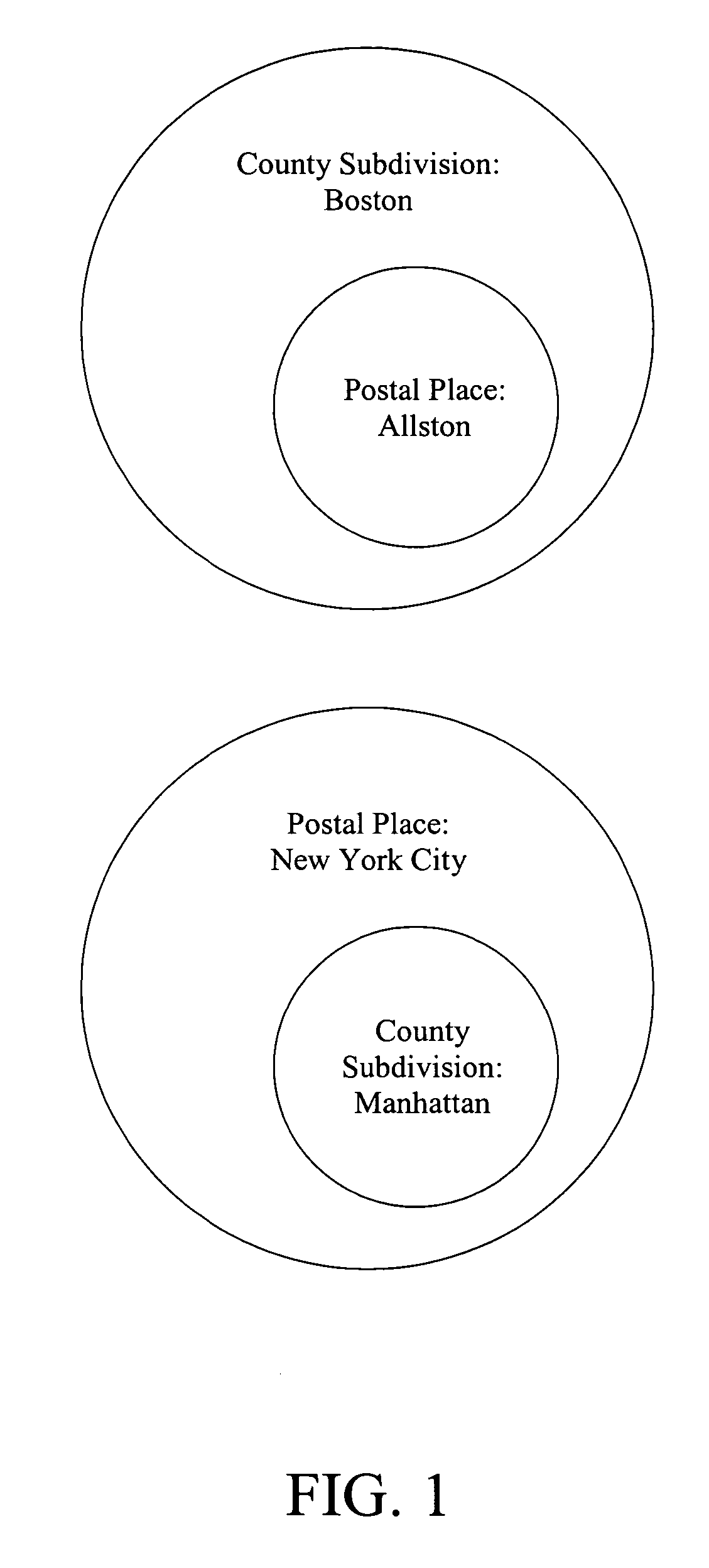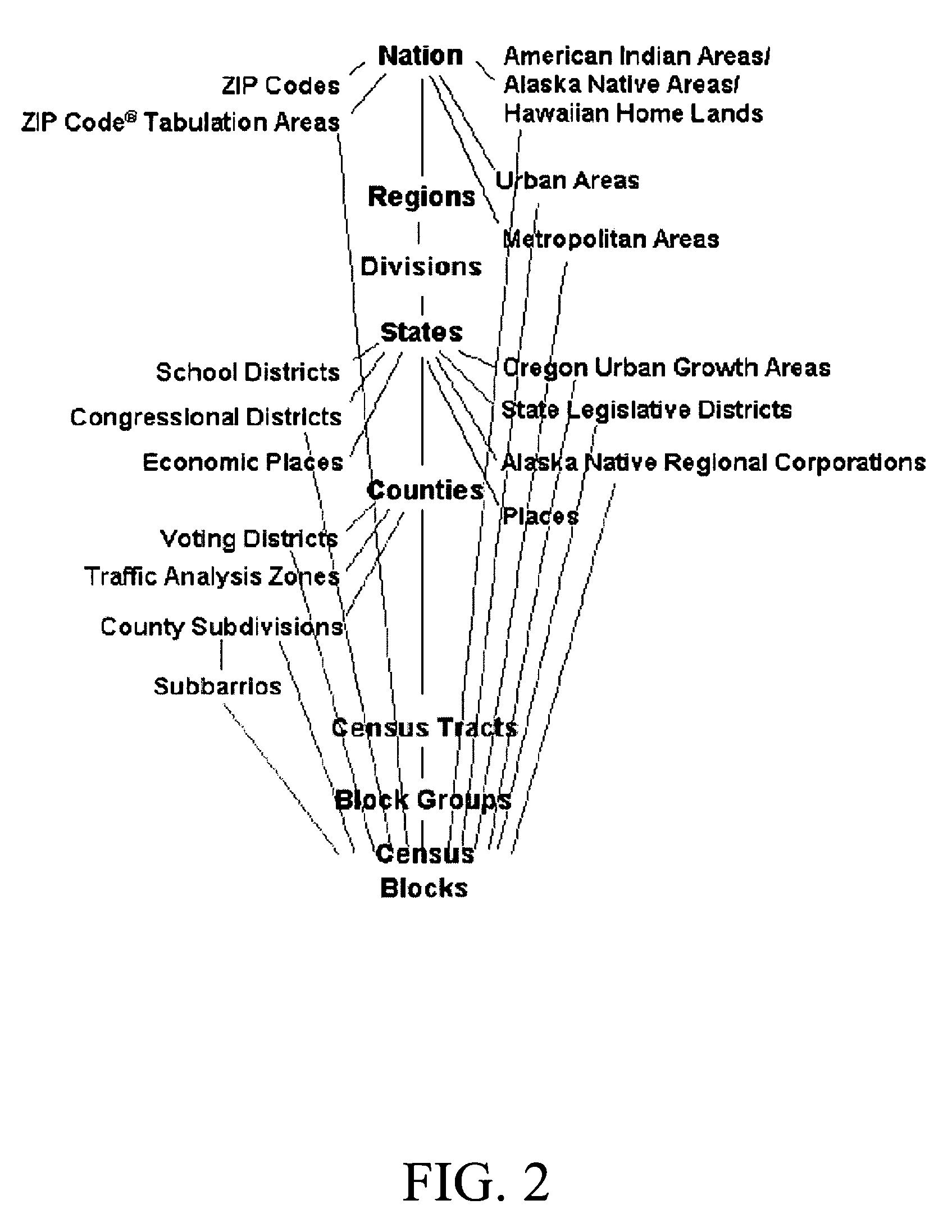Locality indexes and method for indexing localities
- Summary
- Abstract
- Description
- Claims
- Application Information
AI Technical Summary
Benefits of technology
Problems solved by technology
Method used
Image
Examples
Embodiment Construction
[0032] In order to create a better locality index, a thorough list of locality names must first be created by gathering names from a variety of locality name sources, administrative, postal and colloquial locality name sources, among others. Using locality names from any number and type of sources allows for a universal schema for international data. Without this feature only a fixed number of sources may be used, such as postal or administrative name sources, potentially missing important names and constraining the types of sources that may be used in different countries.
[0033] Although the language used in this description is specific to the United States, in embodiments, the same principles can be applied internationally with only nominal adjustments. Examples of foreign locality name source equivalents include the Ordnance Survey and Royal Mail in the United Kingdom, and Stats Can and Canada Post in Canada.
[0034] In embodiments, for a given set of locality name sources, a list...
PUM
 Login to View More
Login to View More Abstract
Description
Claims
Application Information
 Login to View More
Login to View More - R&D
- Intellectual Property
- Life Sciences
- Materials
- Tech Scout
- Unparalleled Data Quality
- Higher Quality Content
- 60% Fewer Hallucinations
Browse by: Latest US Patents, China's latest patents, Technical Efficacy Thesaurus, Application Domain, Technology Topic, Popular Technical Reports.
© 2025 PatSnap. All rights reserved.Legal|Privacy policy|Modern Slavery Act Transparency Statement|Sitemap|About US| Contact US: help@patsnap.com



